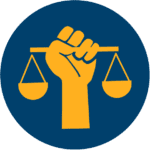Charlie Kestler, one of CCLP’s Policy Fellows, provided testimony in support of Senate Bill 24-211, Adjustments to the Necessary Document Program. CCLP is in support of SB24-211, as it is one of our priority bills.
Recent articles
CCLP testifies in support of protections for DNC drivers
Charles Brennan provided testimony in support of House Bill 24-1129, Protections for Delivery Network Company Drivers. CCLP is in support of HB24-1129.
CCLP testifies in support of TANF grant rule change
CCLP's Emeritus Advisor, Chaer Robert, provided written testimony in support of the CDHS rule on the COLA increase for TANF recipients. If the rule is adopted, the cost of living increase would go into effect on July 1, 2024.
CCLP testifies in support of updating protections for mobile home park residents
Charles Brennan provided testimony in support of House Bill 24-1294, Mobile Homes in Mobile Home Parks. CCLP is in support of HB24-1294.
Legislative Update – April 19, 2019

Bill to Watch: HB 1322
A recent poll from our partners at Colorado Coalition for the Homeless, shows that voters think affordable housing is an urgent matter on a number of fronts. Fortunately, state legislators will have an opportunity to consider two measures this session that will help relieve the housing crisis without increasing taxes or reducing spending on other priorities.
Developed by Colorado Center on Law and Policy with feedback from a diverse group of stakeholders, House Bill 1322 would invest $40 million a year for seven years into the Housing Development Grant Fund, which provides grants and loans for a range of needs, including acquisition, renovation and construction of affordable housing. In addition, the funds could finance down-payment assistance and support home-ownership. It would also help keep mobile homes livable and provide rental assistance for a range of populations.
The fund is administered by the Colorado Division of Housing. HB 1322 requires the Division to consult with stakeholders from urban and rural communities so that the additional funds provided under the bill address a variety of needs throughout the state. Funding will come from the unclaimed property trust fund: a sustainable source of revenue that’s been used to pay for dental benefits for adult Medicaid recipients. The unclaimed property fund consists of dormant bank accounts, securities and life insurance proceeds and the like. While Colorado’s State Treasurer makes a tremendous effort to reunite people with money they forgot or didn’t know they had, there are hundreds of millions of dollars in the fund that remain unclaimed every year. HB 1322 would put a fraction of that money to good use addressing a real problem in Colorado.
Sponsored by Rep. Dylan Roberts, Rep. Perry Will, Sen. Dominick Moreno and Sen. Don Coram, HB 1322 was approved Wednesday by the House Finance Committee on a bi-partisan vote of 9-2 and will go to the Appropriations Committee soon. Learn more in this advocacy alert. Also, contact your state Representative and Senator and ask them to support this important bill.
CCLP also supports HB 1245, which would increase funding for affordable housing by imposing a cap on the amount of sales tax revenue Colorado’s largest retailers can keep as their “fee” for collecting the tax. The additional revenue would be transferred to the same fund within the Department of Local Affairs, and also would be used to improve, preserve or expand the supply of affordable housing in Colorado. The change in how the vendor fee is administered would result in roughly $23 million being invested in housing across Colorado in the first year and $45 million to $50 million per year thereafter.
Both HB 1322 and HB 1245 address the affordable housing problem in targeted and creative ways with no implications to taxpayers or other budget priorities. Both measures deserve consideration and support from constituents and state legislators. Together, these bills could help thousands of Coloradans better afford a home and let them devote more of their hard-earned money to other essential needs.
On the Radar
This week was another busy one for CCLP-led legislation. Among the developments:
* Last Friday, the Colorado Senate approved legislation that would prohibit most private-sector employers from asking about criminal history on initial job applications. If signed by the governor, House Bill 1025 would remove a barrier that has prevented Coloradans from getting on with their lives. CCLP tilled the ground for this bill by developing two previous iterations and built support for “ban the box” legislation in 2016 and 2017. But the impetus for the work goes back years earlier. Learn how we made it happen in this blog posting.
* On Monday, the House Finance Committee approved HB 1309, which would revise Colorado’s Mobile Home Park Act to level the playing field for homeowners residing on rented lots. The bill passed both House Appropriations Committee and second reading on Friday.
* On Tuesday, the Senate Appropriations Committee approved Senate Bill 180, which would establish a $750,000 legal defense fund to help Coloradans facing eviction. With homelessness on the rise in Colorado, this historic legislation would help prevent homelessness before it occurs. But SB 180 also represents a big step in repairing the many disparities individuals with low wages encounter under our legal system.
* Also on Tuesday, the House passed HB 1013, which would extend Colorado’s child care tax credit for households earning less than $25,000 through tax-year 2028. HB 1013 was approved by a 58-5 vote! The bill has been assigned to the Senate Finance Committee for consideration.
* On Wednesday, the Senate Finance Committee approved HB 1189 by a 5-2 vote. The bill, which now goes to the Senate floor, would reform the state’s wage-garnishment laws by requiring clearer and more-timely notice of garnishment. The bill also would reduce the amount subject to garnishment to help people meet household needs while paying their debts. Furthermore, HB 1189 would create a general hardship exemption that would allow for garnishment to be further reduced – or eliminated altogether – in certain circumstances. The bill passed on its second reading on Friday morning.
* On Thursday, the Senate gave final approval to HB 1004, which would task Colorado’s department of Health Care Policy and Finance and the Division of Insurance with developing an insurance plan that would leverage state infrastructure to provide affordable, quality health care and increase competition in the individual market – particularly helping those who live in high-cost areas of the state. The bill passed by a 19-16 vote.





